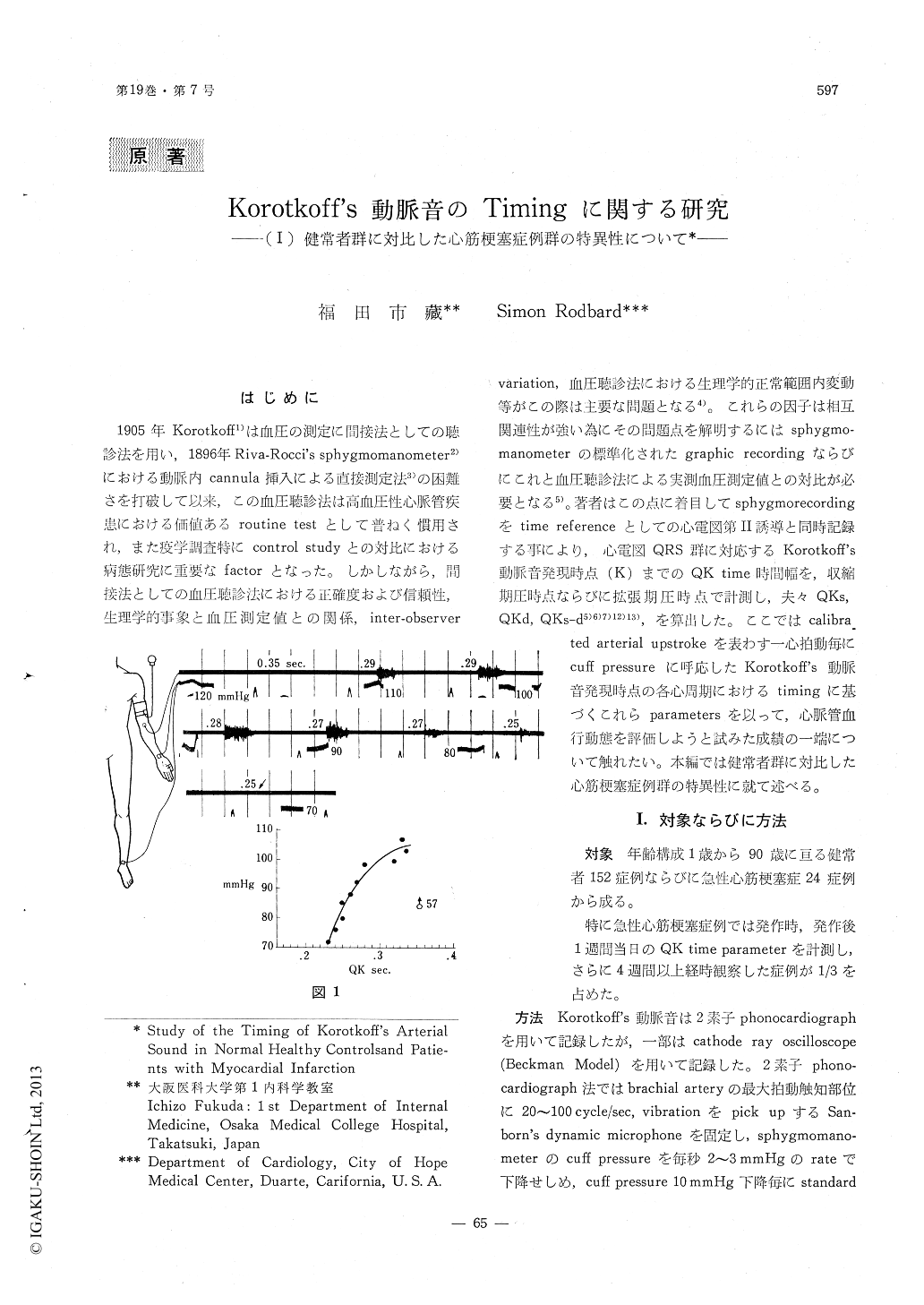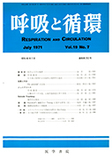Japanese
English
- 有料閲覧
- Abstract 文献概要
- 1ページ目 Look Inside
はじめに
1905年Korotkoff1)は血圧の測定に間接法としての聴診法を用い,1896年Riva-Rocci's sphygmomanometer2)における動脈内cannula挿入による直接測定法3)の困難さを打破して以来,この血圧聴診法は高血圧性心脈管疾患における価値あるroutine testとして普ねく慣用され,また疫学調査特にcontrol studyとの対比における病態研究に重要なfactorとなった。しかしながら,間接法としての血圧聴診法における正確度および信頼性,生理学的事象と血圧測定値との関係,inter-observer varlation,血圧聴診法における生理学的正常範囲内変動等がこの際は主要な問題となる4)。これらの因子は相互関連性が強い為にその問題点を解明するにはsphygmo—manometerの標準化されたgraphic recordingならびにこれと血圧聴診法による実測血圧測定値との対比が必要となる5)。著者はこの点に着目してsphygmorecordingをtime referenceとしての心電図第Ⅱ誘導と同時記録する事により,心電図QRS群に対応するKorotkoff's動脈音発現時点(K)までのQK time時間幅を,収縮期圧時点ならびに拡張期圧時点で計測し,夫々QKs,QKd, QKs-d5)6)7)12)13),を算出した。
By recording the arterial sound heard during indirect blood pressure measurement, together with a time reference such as the simultaneously recorded ECG (Ⅱ lead), data are obtained which provide significant cardiovascular diagnostic in-formation. A plot of the time in each cardiac cycle of onset of Korotkoff's arterial sounds against the cuff pressure at each beat gives the contour of the calibrated arterial pressure upstroke, timed in the cycle.

Copyright © 1971, Igaku-Shoin Ltd. All rights reserved.


